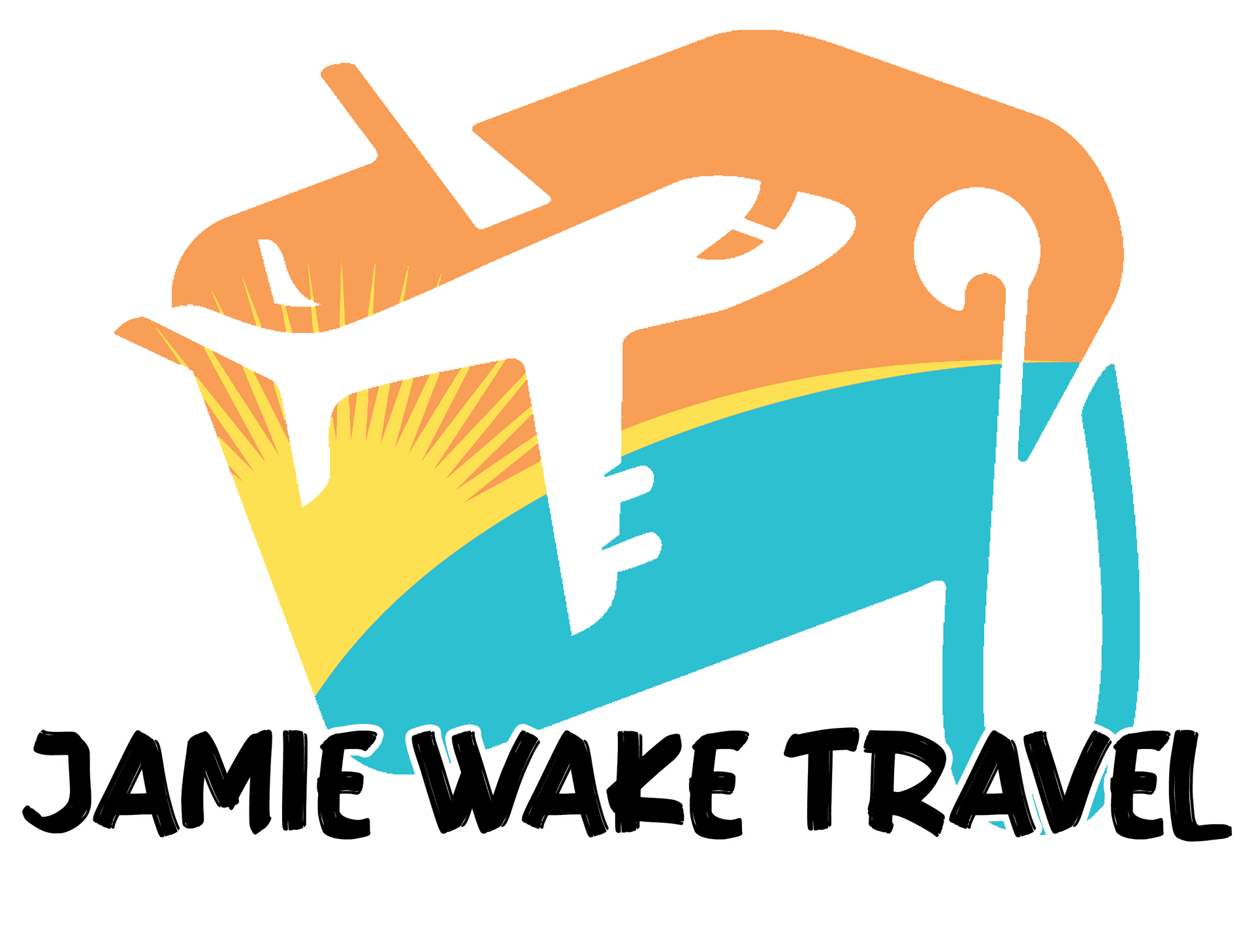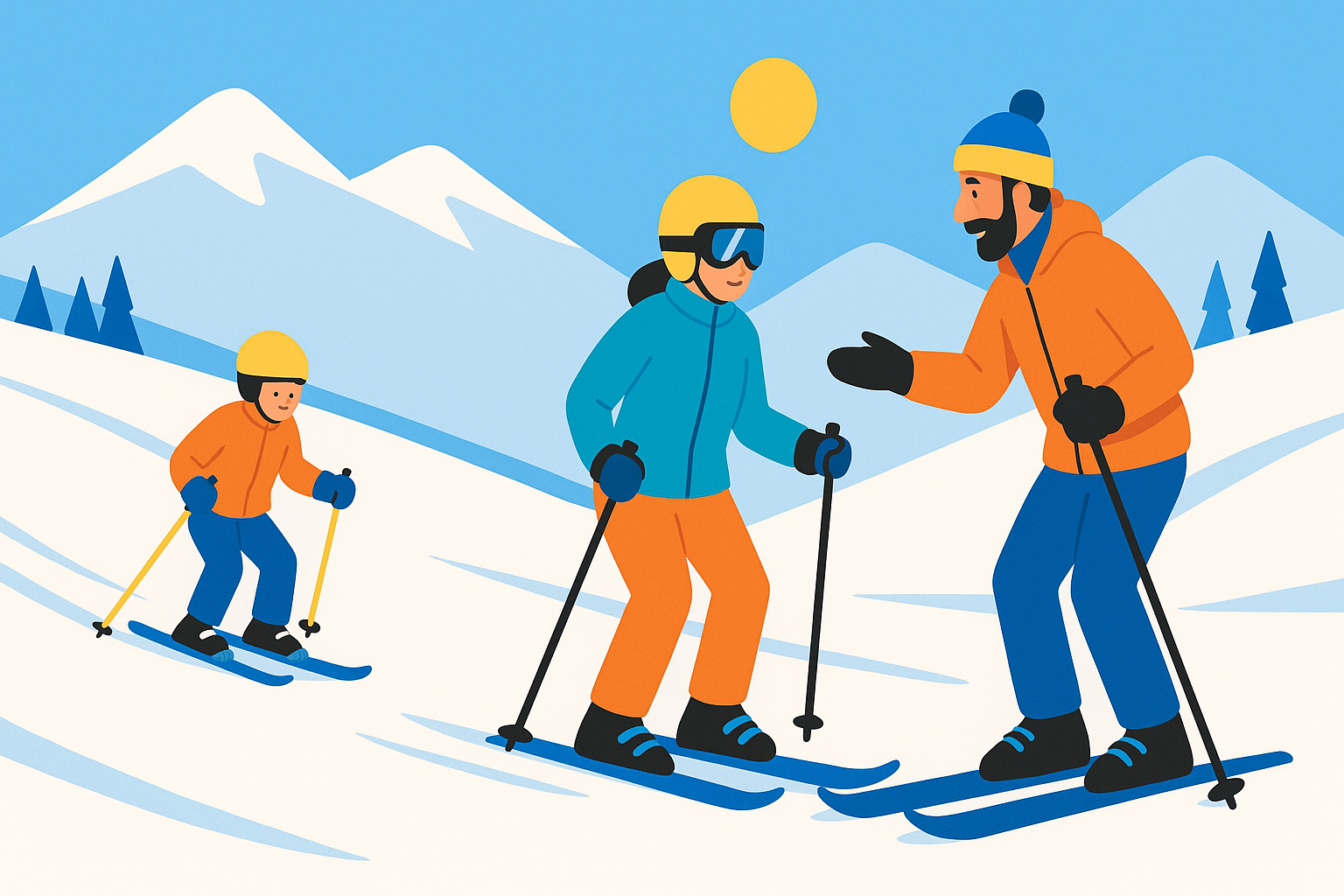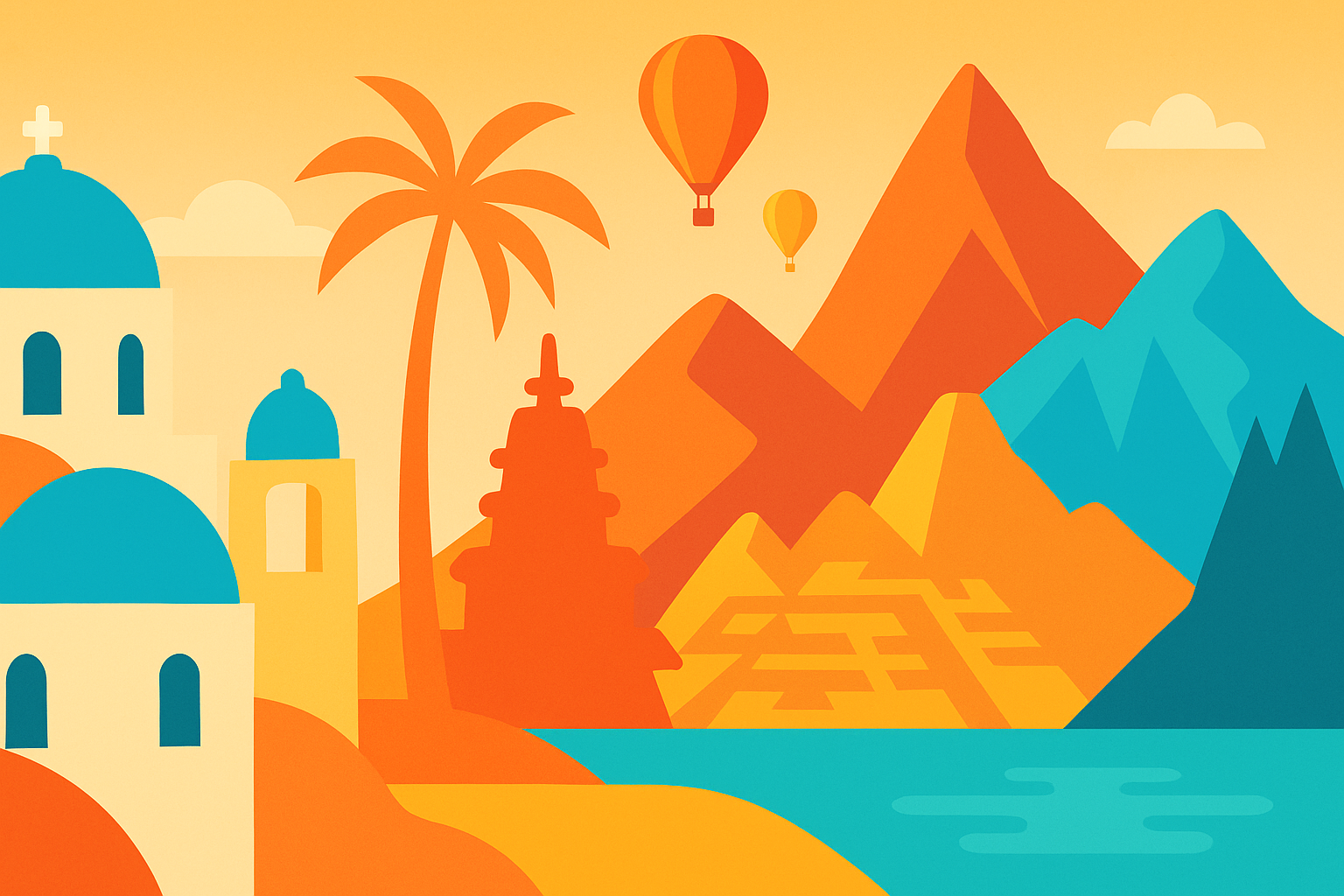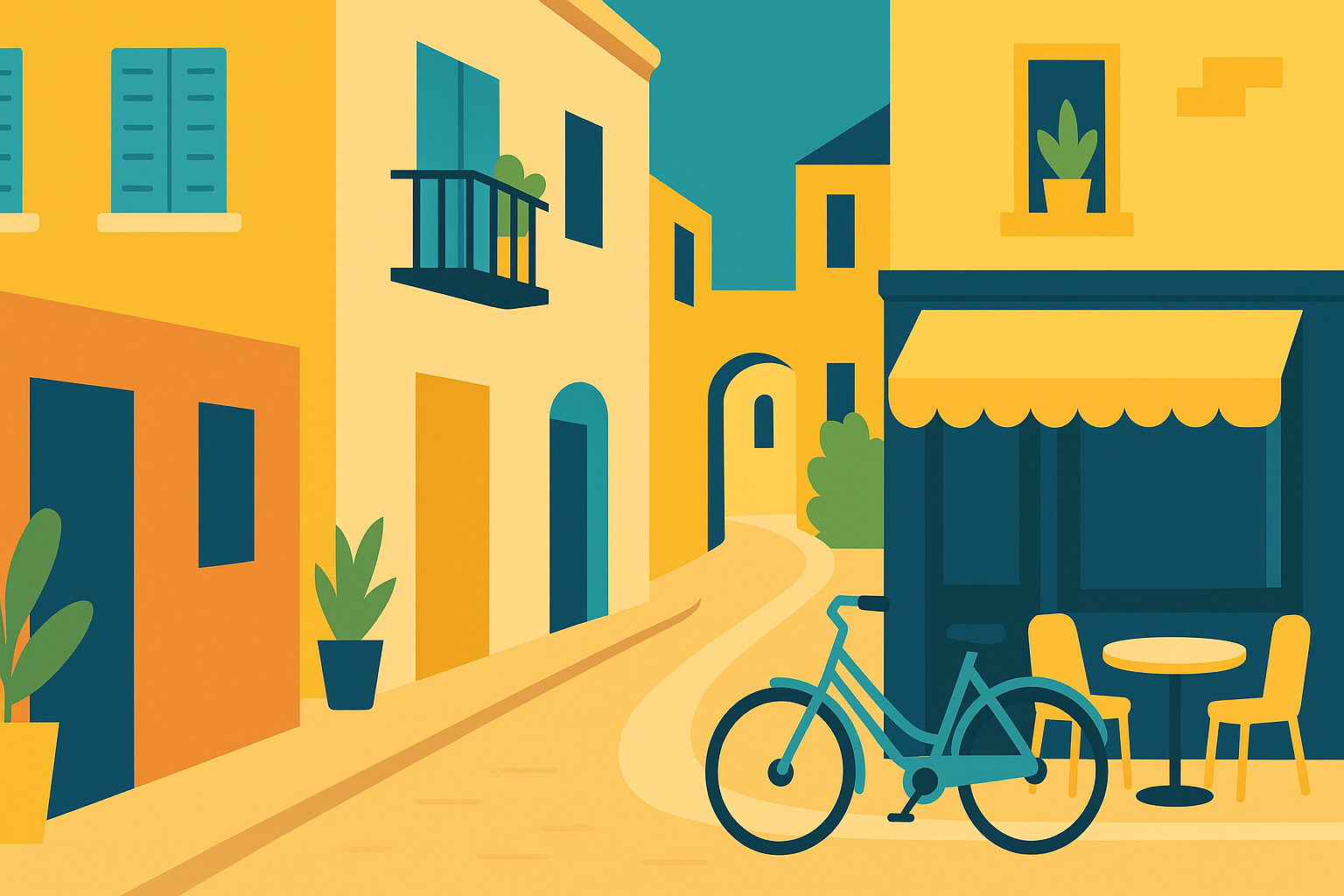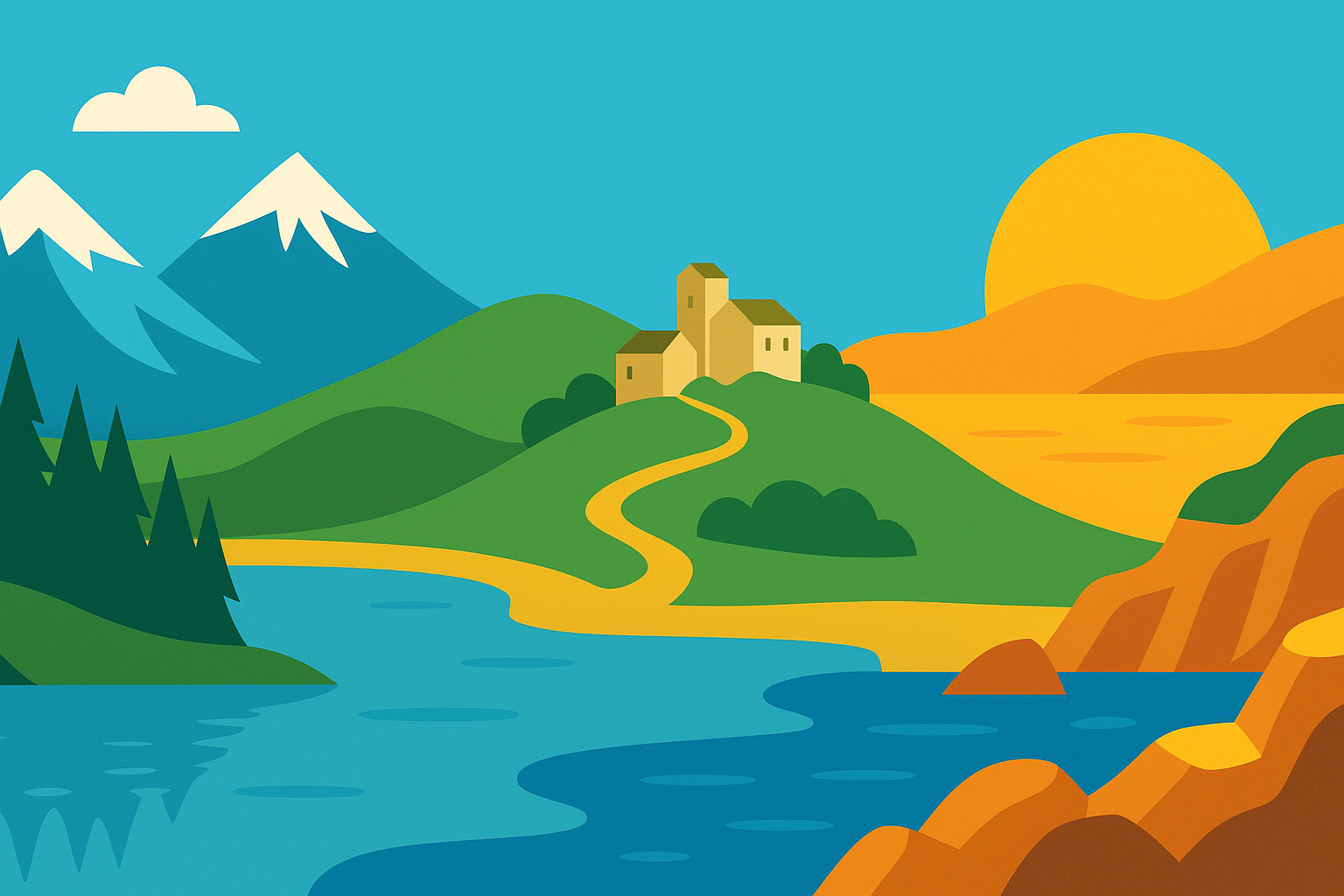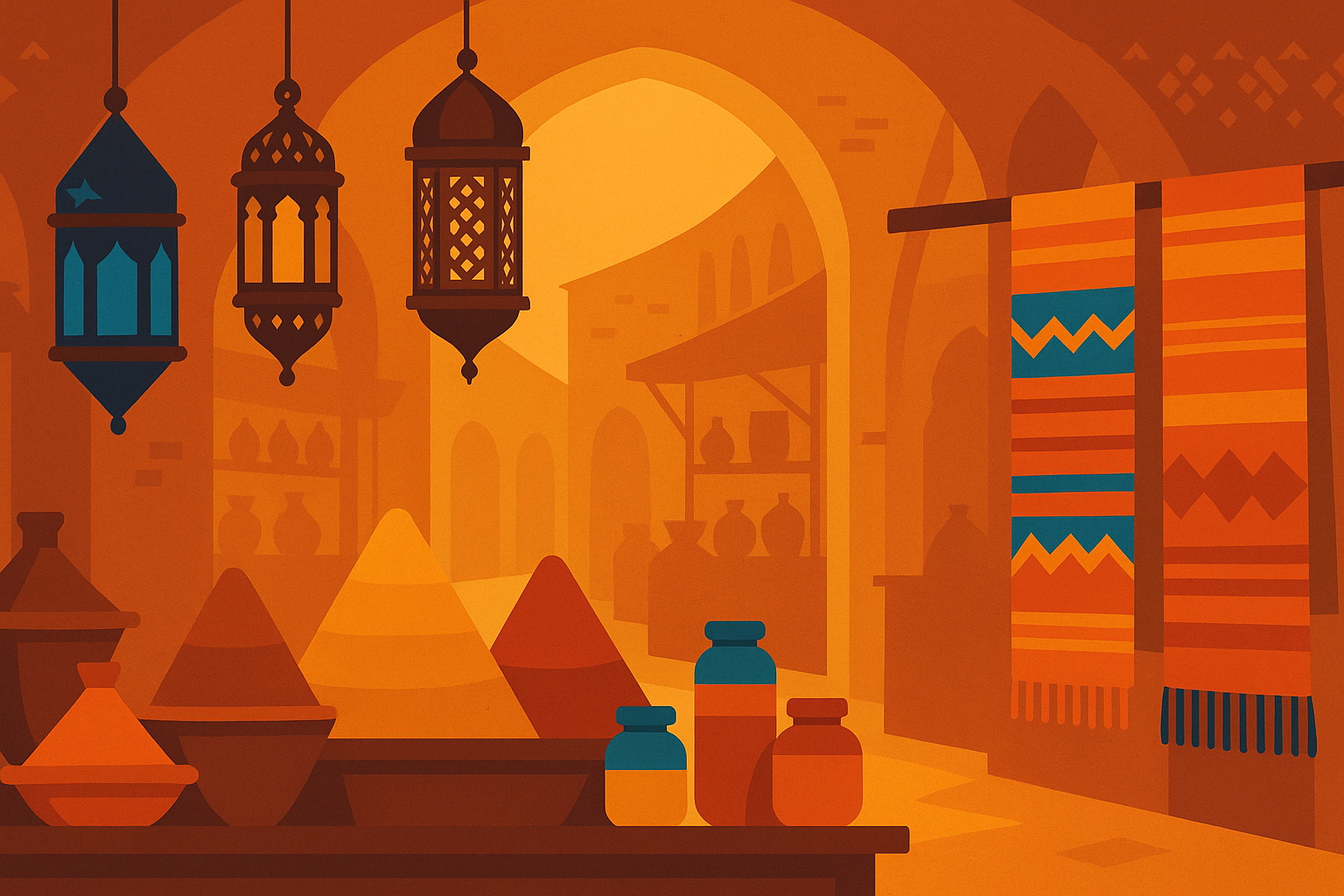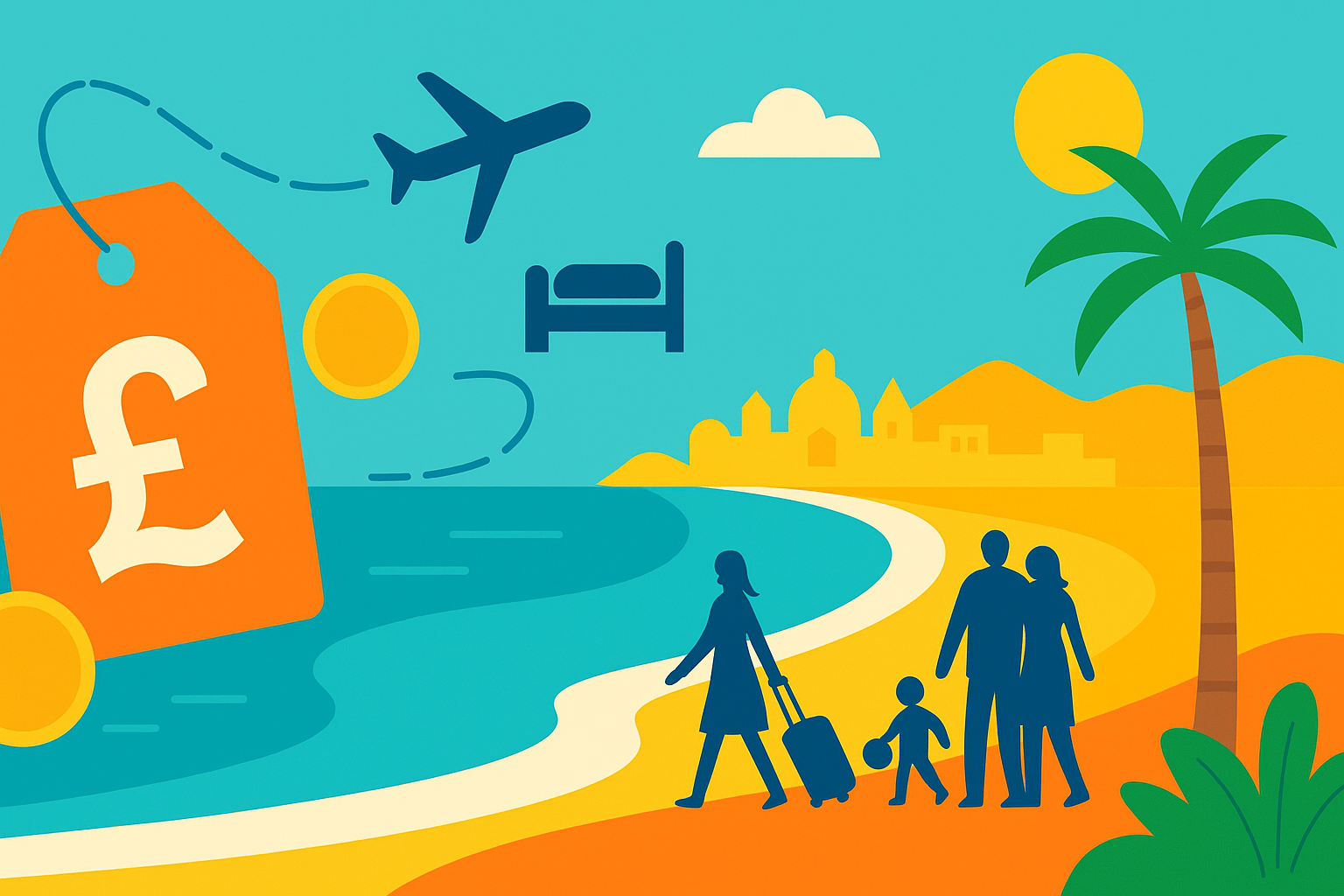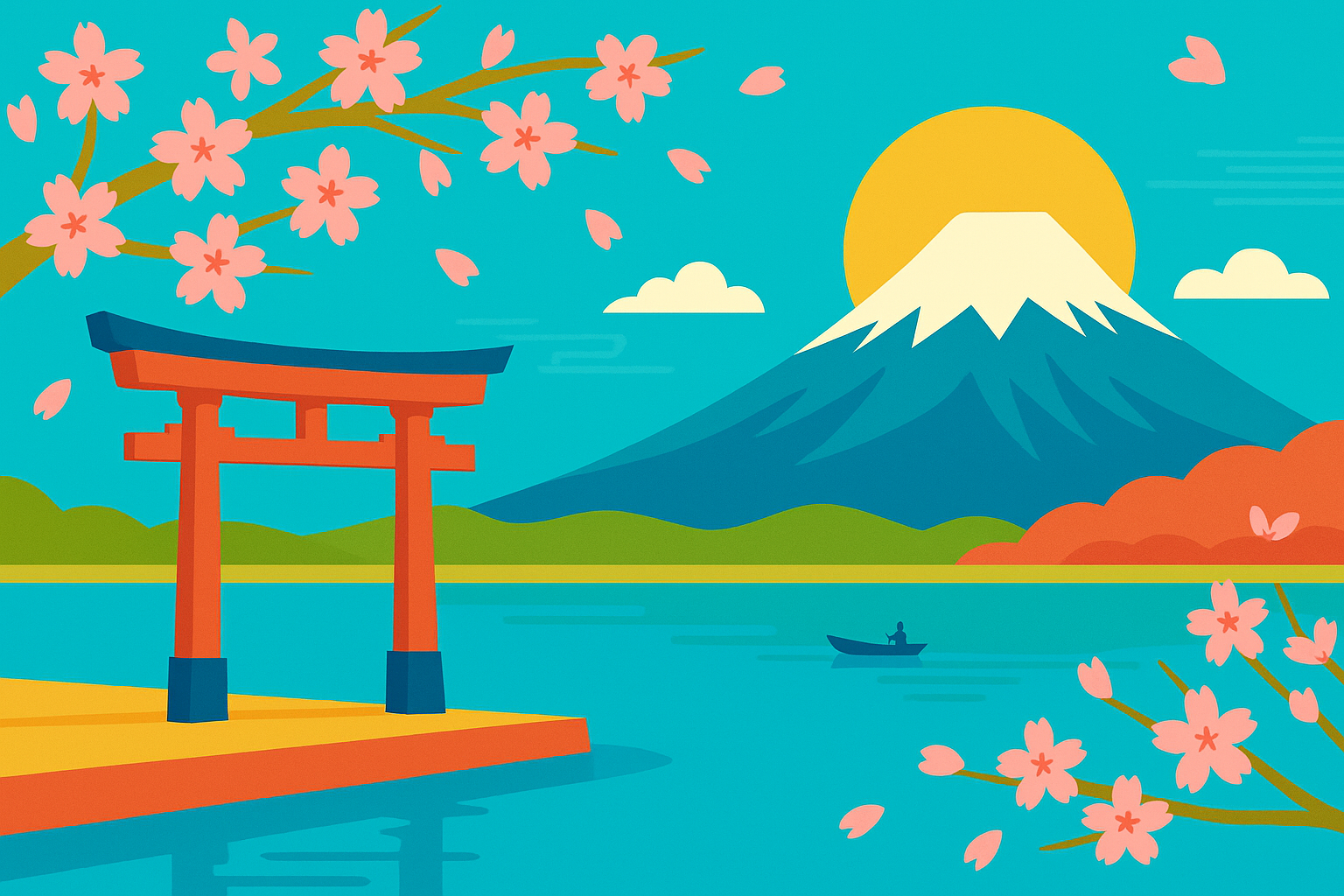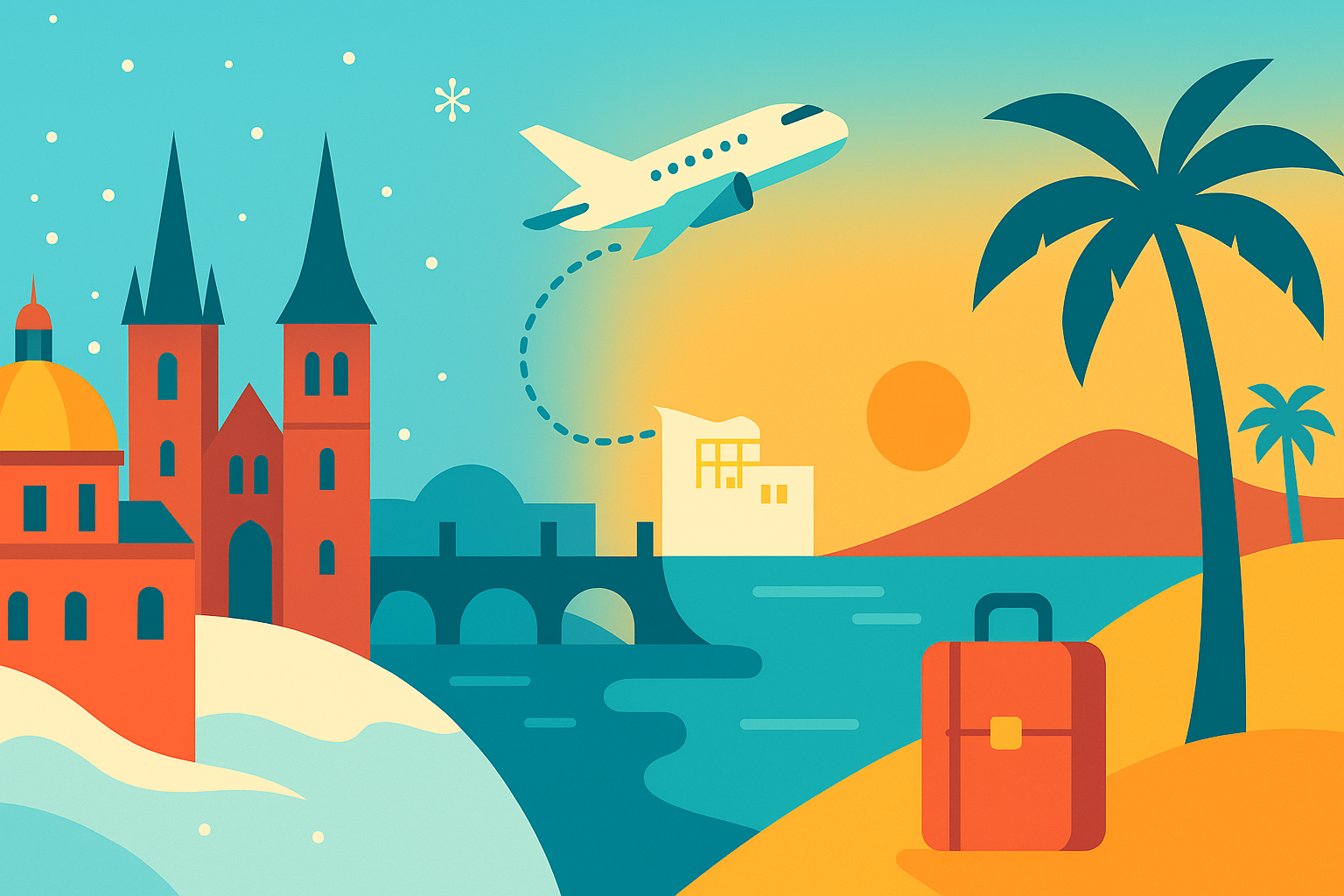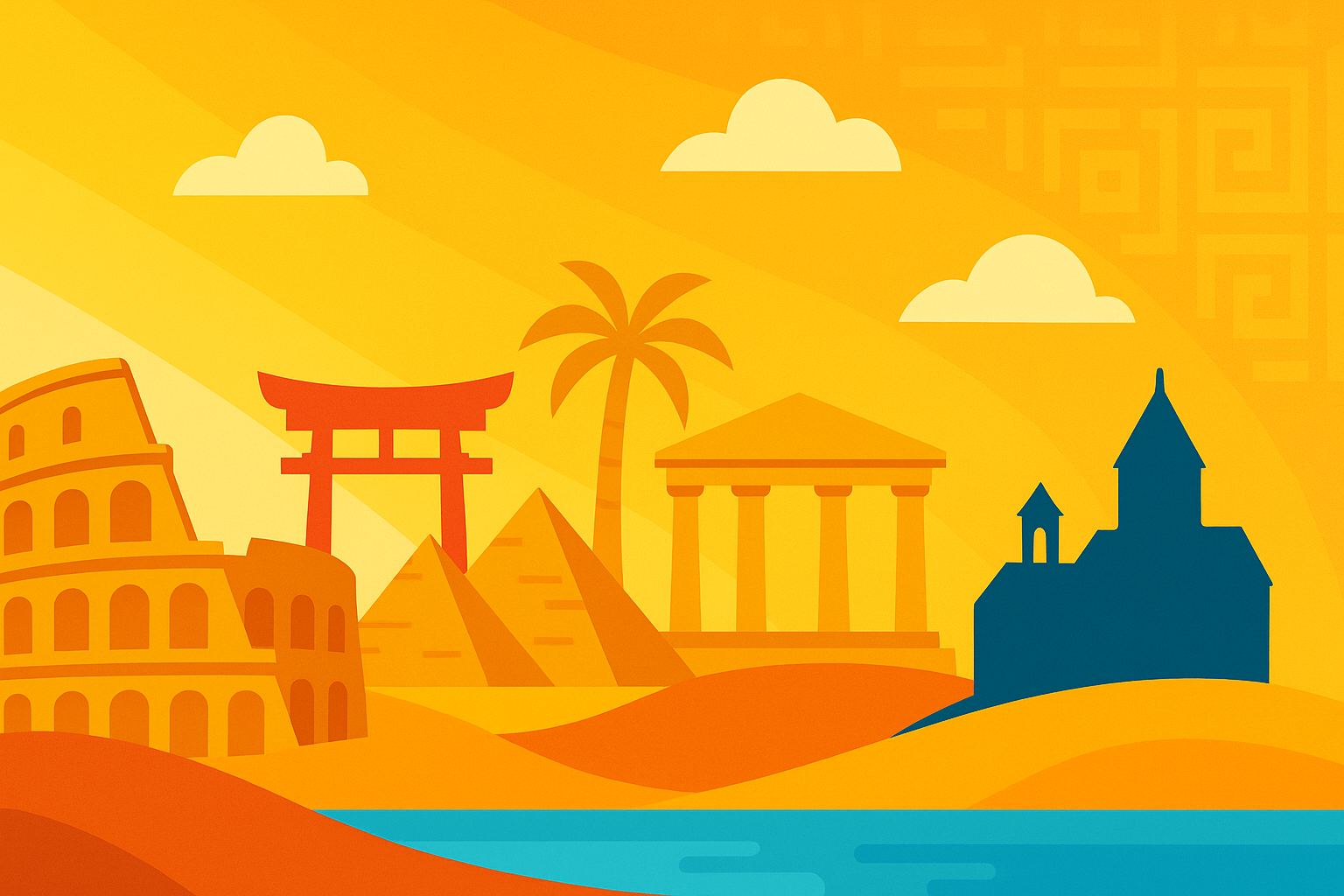A Guide to Trekking in the Himalayas
A Guide to Trekking in the Himalayas
There’s something about the Himalayas that stays with you. The crisp air, the towering snow-capped peaks, the quiet rustle of prayer flags in the breeze—it all combines into a travel experience that’s unlike any other. Himalayan holidays aren’t just about reaching a destination. They’re about slowing down, connecting with nature, and feeling fully alive in the moment.
Whether you dream of standing beneath Everest, hiking to a hidden monastery, or walking through forests filled with rhododendrons, this guide is here to help you plan an unforgettable journey through one of the most awe-inspiring regions on Earth.
Why Choose Himalayan Holidays?
Trekking in the Himalayas isn’t just for the super fit or wildly adventurous. These holidays can be designed around your pace, preferences, and travel style. You’ll walk trails that have existed for centuries, meet communities who live in harmony with the mountains, and discover views that no photograph can do justice.
- Trails suited to all experience levels
- Opportunities to connect with Tibetan and Nepalese culture
- Teahouse stays, luxury lodges, and remote eco-retreats
- A personal challenge with deep rewards
It’s not about conquering peaks—it’s about what you discover on the way.
When to Plan Your Himalayan Holiday
Timing is everything in the Himalayas. The seasons shape your experience—what you’ll see, how comfortable your trek will be, and even which routes are open.
For most regions, the best trekking seasons are:
- Spring (March to May)
Trails come alive with blooming rhododendrons and mild temperatures. It’s an excellent time for photography and seeing nature at its most colourful. - Autumn (September to November)
This is peak season. The skies are clear, the air is crisp, and visibility is perfect. Many high-altitude routes are at their best during this time.
Other seasons bring challenges. The summer monsoon (June to August) makes trails in Nepal wet and leech-prone, while winter (December to February) can make higher altitudes icy and impassable.
That said, Ladakh in northern India is an excellent summer destination. Sheltered from the monsoon by the mountains, it stays dry while the rest of the region is drenched.
Choosing the right time for your trek depends on what you want: blooming valleys, sharp mountain silhouettes, fewer crowds, or cultural festivals. We’ll help match your ideal experience to the season.
Where to Trek: The Best Routes for Himalayan Holidays
One of the best things about Himalayan holidays is the sheer variety of trekking routes. Whether you want a short cultural walk or a high-altitude challenge, there’s a trail to suit your style.
Everest Base Camp, Nepal
This is the classic. The trek to Everest Base Camp is a rite of passage for many adventurers. Starting with a scenic flight to Lukla, the route climbs steadily through Sherpa villages, pine forests, suspension bridges, and ancient monasteries. You’ll end your journey with views of Everest itself from Kala Patthar—unforgettable.
- Length: 12–14 days
- Difficulty: Moderate to hard
- Best time: March–May and September–November
- Highlights: Namche Bazaar, Tengboche Monastery, Everest views
Ask us about guided group departures or tailor-made versions with acclimatisation days built in.
Annapurna Base Camp, Nepal
This trek offers a more compact adventure with just as much beauty. The route climbs through terraced fields, rhododendron forests, and up to a dramatic natural amphitheatre surrounded by the Annapurna peaks.
- Length: 10–12 days
- Difficulty: Moderate
- Best time: March–May and September–November
- Highlights: Ghandruk village, Jhinu Danda hot springs, Machapuchare views
We can also add on cultural stops in Pokhara to create a more varied trip.
Annapurna Circuit
One of the world’s greatest long-distance treks, the Annapurna Circuit takes you from lush valleys to arid plateaus, across rivers, and over Thorong La—the world’s highest trekking pass.
- Length: 15–20 days
- Difficulty: Moderate to tough
- Best time: Spring and autumn
- Highlights: Manang village, Thorong La Pass, Muktinath Temple
Let us help tailor this iconic journey, with options to shorten or extend based on your time.
Langtang Valley, Nepal
If you’re short on time or new to trekking, Langtang is a great introduction. It’s quieter than Everest or Annapurna but filled with beauty: forested trails, glacier views, and charming villages.
- Length: 7–9 days
- Difficulty: Easy to moderate
- Best time: March–May and October–November
- Highlights: Kyanjin Gompa, yak pastures, Langtang Glacier
We can arrange transfers and accommodation to make it smooth from start to finish.
Markha Valley, Ladakh (India)
This trek is a fantastic alternative if you’re looking to avoid the crowds. Set in the remote Indian Himalayas, it combines arid mountain scenery with Tibetan Buddhist culture. You'll walk past colourful gompas, climb over high passes, and enjoy dramatic ridge-line views.
- Length: 8–10 days
- Difficulty: Moderate
- Best time: June–September
- Highlights: Hemis Monastery, Kongmaru La, villages like Skiu and Markha
July and August are ideal, as the region stays dry during the rest of the Himalayas’ rainy season.
Comfort in the Clouds: Best Places to Stay
Trekking in the Himalayas doesn’t mean giving up comfort. From rustic teahouses to upscale eco-lodges, we’ll help you find the right places to rest and recharge along the trail and beyond.
Yeti Mountain Home – Everest Region, Nepal
This collection of high-end lodges along the Everest trail blends traditional design with warm hospitality and modern comforts. Think hot showers, heated blankets, and fresh meals—all with views of snow-covered peaks just outside your window.
If you’re planning to trek to Everest Base Camp, we have a variety of packages that include stays at Yeti Mountain Home. Ask us about what’s currently available.
Ker & Downey Lodges – Annapurna Region, Nepal
Ideal for those who want adventure without roughing it, these lodges are dotted along the lower Annapurna trails. You’ll find en-suite bathrooms, gourmet meals, and beautifully landscaped grounds with Himalayan views.
Our tailor-made itineraries can include any number of these properties. We often have great deals available—just get in touch to hear what’s on offer.
The Pavilions Himalayas – Pokhara, Nepal
A peaceful retreat that’s perfect for pre- or post-trek relaxation. This eco-friendly resort features private villas, an organic farm, and a spa for soothing those tired legs. It’s close to Lake Phewa and the buzzing cafes of Pokhara but feels completely secluded.
If you’re starting or ending your trek in Pokhara, we can help secure a stay at The Pavilions as part of your journey.
The Grand Dragon Ladakh – Leh, India
One of the finest hotels in Ladakh, The Grand Dragon offers luxury at high altitude. Expect panoramic views, excellent service, and Ladakhi-inspired interiors. It’s a perfect base before or after treks like Markha Valley or Stok Kangri.
We can arrange extended stays in Ladakh to include this hotel as part of your custom itinerary.
What to Pack for a Himalayan Trek
When it comes to packing for Himalayan holidays, the key is smart layering and essential gear. You don’t need the most expensive equipment—just the right items for comfort, safety, and versatility.
Essentials include:
- Lightweight hiking boots (broken in)
- Base layers (moisture-wicking)
- Fleece and insulated jacket
- Waterproof jacket and trousers
- Gloves, hat, and neck warmer
- UV sunglasses and sunscreen
- Reusable water bottle and purification tablets
- Small first-aid kit and altitude tablets (if advised)
- Trekking poles (especially for descents)
- Lightweight sleeping bag (if staying in teahouses)
If you're not sure what to bring, we provide every client with a personalised kit list based on your route, season, and level of comfort.
Understanding Acclimatisation and Altitude
Trekking at altitude affects everyone differently, regardless of age or fitness. Acclimatisation is a gradual process that allows your body to adjust to lower oxygen levels. The best way to stay safe? Take your time.
Key tips:
- Don’t rush. Slow ascents are safer and more enjoyable.
- Build in rest days above 3,000m.
- Drink plenty of water and eat regularly.
- Avoid alcohol at altitude.
- Know the signs of AMS (acute mountain sickness): headache, nausea, dizziness. Learn more about altitude sickness symptoms and prevention.
All Jamie Wake Travel itineraries include well-paced ascents with planned acclimatisation stops. We also offer advice before you go and emergency contacts throughout your trip.
Your Booking Is Protected with Jamie Wake Travel
When you book with Jamie Wake Travel, you’re not just buying a holiday—you’re securing a safe, financially protected experience.
Here's what we include with every tailor-made trip:
- ATOL Protection – Your money is safeguarded for any flight-inclusive package.
- Protected Trust Services (PTS) – All payments are held in a secure trust account until your travel begins.
- Supplier Failure Insurance (SFI) – If any tour operator or supplier ceases trading, you’re covered.
- Scheduled Airline Failure Insurance (SAFI) – If your airline goes bust, your costs are recovered.
These layers of protection mean your money—and your peace of mind—are in safe hands. It’s just one more reason travellers trust us with their Himalayan holidays.
Trekking Responsibly in the Himalayas
The Himalayas are breathtaking—but also fragile. As travellers, we have a responsibility to protect these mountain environments and respect the communities that call them home.
Here’s how we help you make your trek more sustainable:
- Use refillable bottles and water filters to avoid plastic waste
- Choose local guides and porters paid fair wages
- Stay in eco-conscious lodges and locally owned accommodation
- Respect cultural norms (modest dress, no shoes in temples, ask before taking photos)
- Carry all rubbish back with you if bins aren't available
Every choice counts. We work only with ethical partners and suppliers who share our values, so your adventure leaves a positive footprint.
Jamie Says:
“There’s something humbling about standing in the shadow of the Himalayas. These aren’t just peaks—they’re places of pilgrimage, memory, and meaning. When we send clients here, it’s not just about the journey—it’s about helping them come home with a story they’ll never stop telling.”

Ready to Go? Let’s Build Your Himalayan Holiday
Planning a trip to the Himalayas might feel daunting—but it doesn’t have to be. At Jamie Wake Travel, we’re here to make sure every detail is looked after, from your very first enquiry to your safe return home.
You can now explore and build tailor-made Himalayan holidays directly on our website. Use our easy holiday search tool—available on every page—to browse handpicked trips, trusted suppliers, and personalised itineraries. Every holiday you create online is protected and designed to be as unique as you are.
Prefer to leave the planning to us? That’s what we’re here for. Give us a call on 01495 400005 or fill out our holiday enquiry form. Whether you want to join a small guided group, trek privately, or simply relax in the shadow of the mountains, we’ll help design a trip that feels like it was made just for you.
Your Himalayan adventure starts with a single step—and that step is getting in touch.
Frequently Asked Questions
What are the best Himalayan holidays for beginners?
Langtang Valley in Nepal and the lower Annapurna trails are ideal for first-time trekkers. They offer scenic beauty, manageable routes, and comfortable accommodation.
When is the best time to go trekking in the Himalayas?
Spring (March to May) and autumn (September to November) offer the clearest skies and most comfortable trekking conditions for Himalayan holidays.
Do I need a guide for trekking in the Himalayas?
While some routes allow independent trekking, we strongly recommend a licensed guide for safety, cultural insight, and smoother logistics.
What’s included in a typical Himalayan holiday package?
Our tailor-made trips can include flights, permits, guides, porters, accommodation, meals, and transfers—all with full ATOL and PTS protection.
Can I customise my trek to include cultural experiences?
Yes. We can include monastery visits, cooking classes, home stays, and more to enrich your Himalayan holiday with local culture.
How do I prepare physically for a Himalayan trek?
Regular walking, cardio, and strength training in the months before departure will help build stamina and confidence for the trail.
What’s the accommodation like on the trek?
You’ll stay in a mix of teahouses, eco-lodges, or upscale properties depending on your route. All can be chosen to match your comfort level.
Are solo travellers welcome on Himalayan holidays?
Absolutely. We welcome solo travellers and can arrange either private treks or places in small group departures.
Is my trip protected if something goes wrong?
Yes. All bookings with Jamie Wake Travel include ATOL, PTS, SFI and SAFI coverage for total peace of mind.
Can I book my Himalayan holiday online?
Yes but only some elements of. Use the search tool on our website to create your own bespoke itinerary—or contact us directly to let us do the planning for you.
